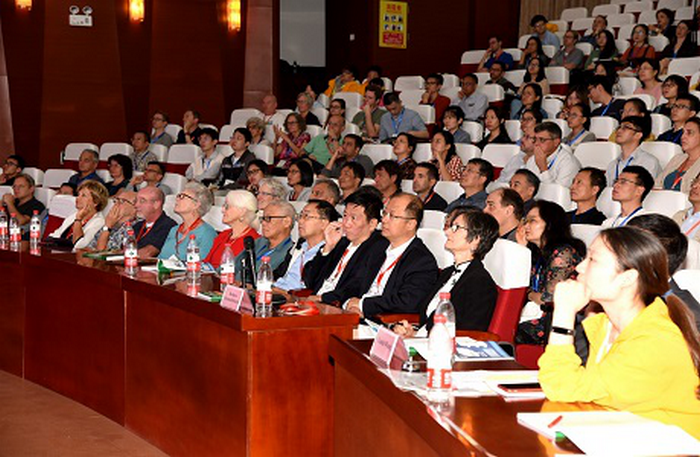
The opening ceremony of the 21st International Congress on Nitrogen Fixation

Address by Professor Barbara Reinhold-Hurek,the chairwoman of the International Executive Committee on Nitrogen Fixation
On October 10, Professor Wang Xuelu, Dean of the College of Life Science and Technology of HZAU and chairman of the 21st International Congress on Nitrogen Fixation (INCF), called for attention to the research on biological nitrogen fixation (BNF). He said at the congress in Wuhan: “BNF plays an important role in natural nitrogen cycle and agricultural production. Research on biological nitrogen fixation can greatly ensure food security and cope with energy crisis, and is also the key to achieving environmental friendliness and sustainable agricultural development.”
Prof. Wang introduced that for a long time, the increase of crop in China has relied heavily on the N fertilizer. China has consumed about 35% of the world’s N fertilizer with 8% of the world’s arable land. The massive loss of N fertilizer has led to serious eutrophication in rivers and soil hardening. In the global ecosystem, the annual BNF capacity is about 200 million tons, which is equivalent to the total amount of industrial N fertilizer in the world. And the symbiotic nitrogen fixation (SNF) of legumes accounts for 60-70% of the world’s BNF.
The BNF of soybean accounts for 86% of the total nitrogen fixation of legumes in the agricultural system. Soybean is one of China's major grain crops, but its current cultivated area only accounts for 12% of the world's major producing countries, which leads to 90% of China’s soybeans dependence on imports. It is an important large-scale application of N fertilizer in China. Prof. Wang indicated that the expanding soybean cultivation and improving its nitrogen fixation efficiency are the key to solve the soybean crisis, to reduce nitrogen fertilizer application, and to develop green and sustainable agriculture.
Prof. Gary Stacey, from the University of Missouri in America, reviewed his personal research career and the history of SNF. He said:” SNF significantly reduces fertilizer use to meet the needs of growing population and thus promotes the sustainable development of agricultural systems. The general pattern of SNF research in plant-microbial interaction has made great progress in the past 40 years.”
However, there are still a lot of problems to be solved, such as, how to explain the specificity of the interaction between legumes and rhizobia? Can we extend SNF to non-leguminous plants? And Gary Stacey expects vigorous development of SNF. Nearly a fifth of the presentations at the conference focused on SNF of soybean. Due to the lately-start research on BNF in China and the huge research gaps between China and the world, they hope to take the opportunity to promote vigorous growth in the SNF efficiency of legumes, and the basic and applied research of non-leguminous plants.
More than 420 delegates from 24 countries and regions attended the congress, including Prof. Zhao Jindong, an academician of Chinese Academy of Sciences; Prof. Sharon Lang and Prof. Caroline Harwood, members of National Academy of Sciences, the United States; Prof. Éva Kondorosiva, a member of Hungarian Academy of Sciences and Foreign associate of National Academy of Sciences,the United States; Prof. Ton Bisseling, a member of the Dutch Royal Society; Prof. Ray Dixon, a member of the Royal Society of London and other world-renowned scholars in the field of nitrogen fixation.